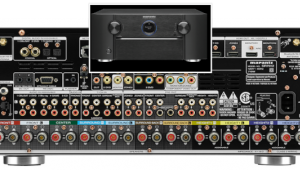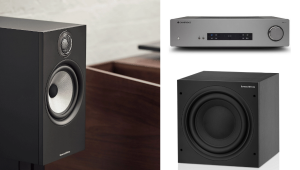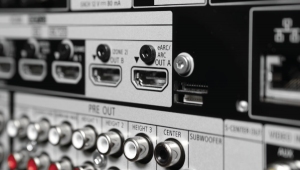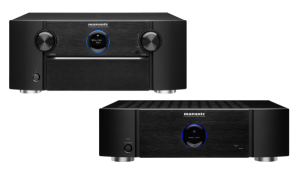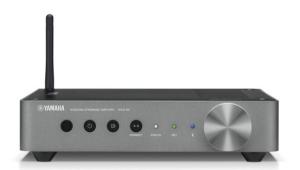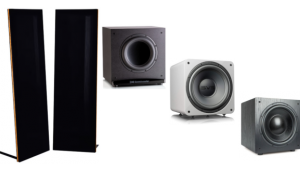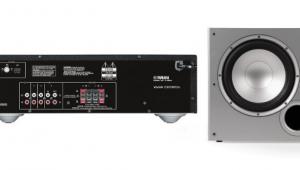Lossless Audio, Black Setting, SD Upconversion

Love my new Pioneer VSX-03TXH receiver. Love my new Sony BDP-S350 Blu-ray player. But how do I know if Dolby TrueHD or DTS-HD Master Audio is working? I have changed settings on both units and actually read the manuals of both units. Pioneer's website has a picture of the receiver with TrueHD lit up on its front panel, but I have yet to see it on my front panel. My units are connected together only with an HDMI cable. Also, as knowledgeable as I am about home-theater stuff, what is PCM?
Jonathan Macomber
To send a Dolby TrueHD or DTS-HD MA bitstream from the player to the receiver, the player must be set to output the native bitstream. In the Sony BDP-S350, the Audio (HDMI) setting should be Auto, which is the default setting. For the Pioneer receiver, Signal Select should be set to Auto (default) or Digital. When the receiver receives a Dolby TrueHD signal, the "double-D" HD indicator will light on the front panel; I see no TrueHD indicator per se in the drawing of the front panel in the owner's manual. When it receives a DTS-HD or regular DTS signal, the DTS indicator will light up; apparently, there is no way to distinguish between these two bitstreams on the front panel.
Then, you need a Blu-ray disc with a soundtrack in one or the other format. Few if any discs offer both, and some offer neither one. Of those discs that have one or the other, some default to it, but others do not, in which case you have to manually select it in the disc's setup menu.
PCM stands for pulse-code modulation, which is a standard digital-audio format that uses no data compression. It's the format used on CD, DVD-Audio, and some Blu-ray discs. It's the highest-quality digital audio because it's uncompressed, but Dolby TrueHD and DTS-HD Master Audio are theoretically equivalent because they use lossless compression, which means the compression does not discard any information. Thus, Dolby TrueHD and DTS-HD MA can be converted to PCM and should sound identical to the PCM original.
Black is Black
My Samsung HL61A750 has an HDMI Black Level setting. The two choices are Normal and Low. Normal tells the TV to expect an RGB range of 0-255, and Low tells it to expect a range of 16-235. Does this setting have to match the RGB output range setting of my source? How does this affect the display of below-black, above-white, and color banding in general? Which is the better setting to be calibrated to?
If set to receive 0-255, I can see below-black in test patterns and adjust my brightness accordingly. If it's set to 16-235, I have to crank it back up as the black level drops considerably and below-black disappears from the test patterns. I've heard arguments both ways and want to know what the experts are using.
Al Vucic
I always set a TV to display 0-255 so I can see below-black and set brightness precisely. This is also important so the TV can display above-white, which exists in some content, even though video is theoretically limited to 16-235. The source should also be set to output 0-255 so it will send below-black and above-white information. This setting has little to do with color banding, which depends on the bit depth with which color levels are represented.
The Impossible Dream
My quest for an LCD HD display that does right by standard-definition signals is chronicled on my website. When, if ever, do you suppose I'll be able to get a reasonably acceptable image on something like a Samsung LN55A950 for SD channels on DirecTV? I've got a 35-inch Toshiba CRT TV and an even crisper, slightly smaller Sony, and both are more than acceptable.
Best Buy let me hijack their set-up for a while, and aside from a slightly sharper C-SPAN feed, I didn't see much improvement using a Denon receiver with an HQV scaler on the Samsung. And a Friends rerun on TBS (SD) looked truly horrific.
Is there a magic bullet I'm unaware of? Your magazine ran a favorable review of an Edge scaler, but has it passed the TBS test?
Jim Kearney
Upconverting SD so it looks good on a large HD screen is a very difficult proposition, and I agree that most devices don't do a good job of it. David Vaughn reviewed the DVDO Edge for UAV here, and he thought it improved SD quite a bit, though this was more evident on test clips than on real broadcast material.
The best I've seen in this regard is the Toshiba LCD TVs with SRT (Super Resolution Technology); see my review of the 52XV545U. I also know of some excellent work being done in this regard by another processor company, but I can't say any more at this time because I signed a non-disclosure agreement. The prototype I saw at CES did a surprisingly good job even on YouTube content. But don't get your hopes up too highputting lipstick on a pig does not hide the fact that it's still a pig.
If you have a home-theater question, please send it to scott.wilkinson@sorc.com.
